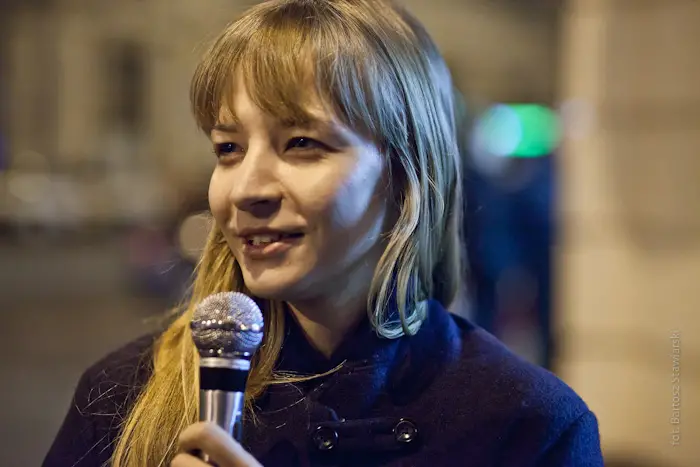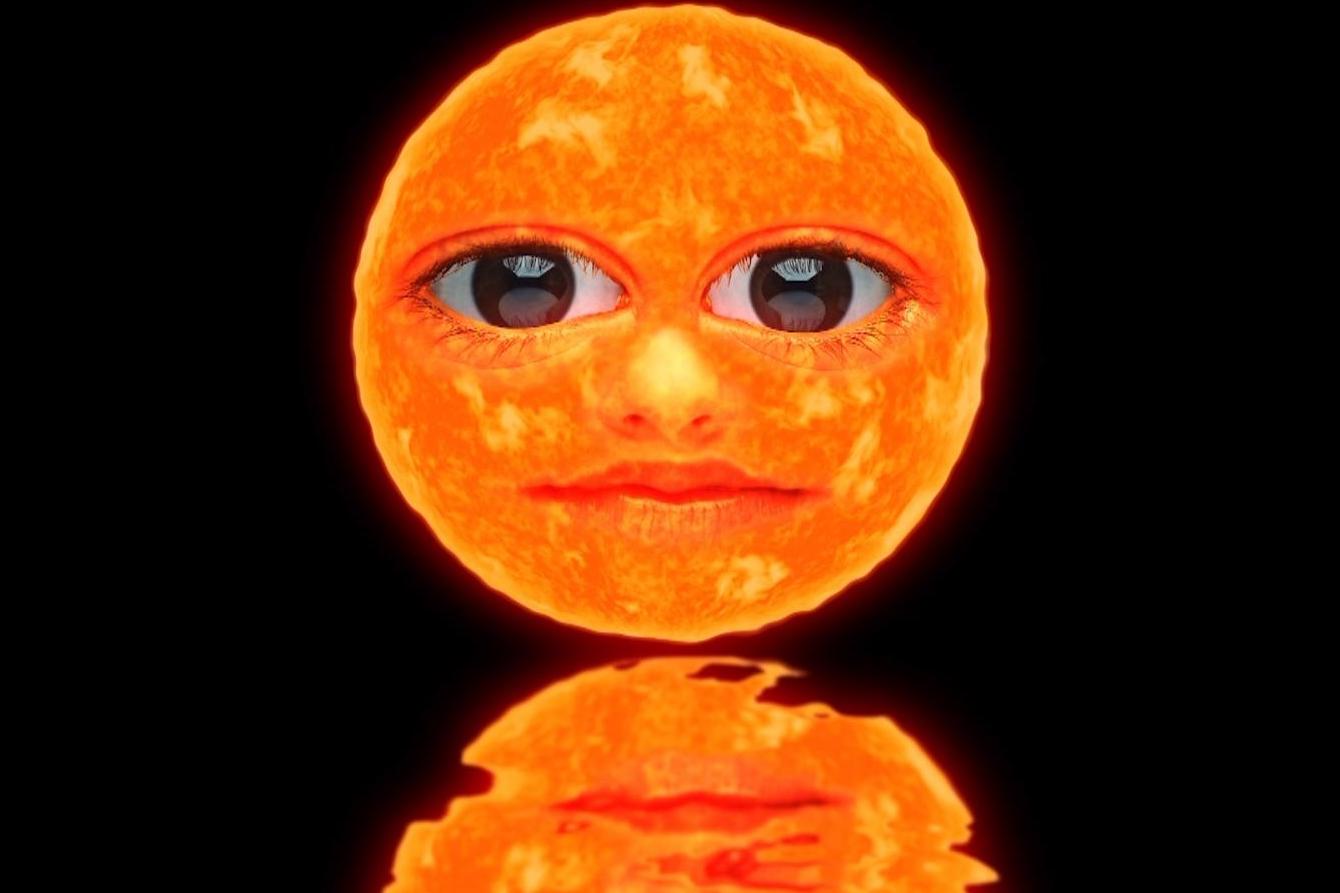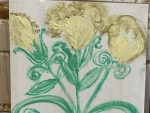“The New Sun” and “What the Sun has Seen”, the film installation that won Polish artist Agnieszka Polska a Preis der Nationalgalerie, continues to bear political and social relevance.
The film, which begins with a single mouth (presumably Polska’s) moving atop a black screen, is centralized around a baby-esque sun. Its face is dominated by captivating almond shaped eyes; its nose and mouth are less significant, blending in smoothly with the fiery texture of its skin. The sun is quasi anthropomorphic — it holds the ability to see and speak, but lacks movement, taking on a spherical shape rather than an appendaged one. The sun’s only sense of movement comes from its ebb that corresponds to the music playing over head. It simply floats, isolated against the same dark background.

The Sun is meant to be an omnipresent figure that looks down upon the world; its childlike disposition suggests that it is surprisingly benevolent and nonthreatening. The figure reassures its audience by saying, “This is a film about love,” further affirming that its relation to humanity stems from a place of affection and concern.
“What the Sun has Seen” is a reimagined adaptation of the poem “What the sun has seen” by Maria Konopnicka. The poem narrates the everyday happenings of a rural family as it watches down on them from the sky above. However, Polska’s narrative takes on a darker twist than Konopnicka’s. Her sun jokes about the devastating effects of climate change and the inevitable catastrophic events that will take place unless kept in check. Humanity as a whole becomes the sun’s subject, a testament to the idea that the effects of climate change are indiscriminate.
The audience is lured into an intimate conversation with the all-pervasive sun. The sparsely decorated installation space also allows for the viewer to be isolated in his or her experience. There is literally nowhere to hide — the sun sees everyone and everything, further emphasizing the responsibility we all hold as members of a collective, universal community.
Polska’s installation is a dream-like landscape, which falls in line with her thematic foundation. Her pieces are made by manipulating found or created visual material, i.e., the face superimposed on the sun. That, coupled with various layers of audio, such as talking, singing and instrumentals, creates a trance-like experience for the audience. In an interview with Apollo Magazine, Polska makes mention of the fact that the only thing real about her work is the emotion that it elicits. She is a dedicated storyteller, who finds that employing fiction within her work oftentimes resonates better with the audience because, apparently, the current and the real aren’t enough to incite change.
Much of Agnieszka Polska’s work comments on the importance of our ethical responsibilities toward new and persisting political and social issues such as climate change, inequality and a rising nationalistic sentiment — one specifically being raised by Trump and his decision to withdraw the United States from the ongoing Paris climate agreement. He put the future of American industry above the fate of humanity — an act that won’t go unseen by Polska’s sun.
However, Polska said, “My works are not directly politically active, they are more like visual essays on certain topics.” Nonetheless, she is dedicated to the idea that artists hold a certain responsibility for responding to politically and socially charged questions with their work. The artist argues that creatives have a certain privilege of visibility that many other activists don’t, and that, in turn, allows them the opportunity to bring pressing issues to the forefront.
Her portfolio is eclectic, consisting of various film and print works that all point to a number of different social and political issues in Europe and abroad. Many of Polska’s work also features historical artists as its subject; “Future Days,” a short film of hers, narrates the afterlife of famous artists such as Bas Jan Ader and Lee Lozano. With the film’s layered audio and visual effects, Polska was able to create a dynamic and illusory environment that captivates viewers. Just like “The New Sun” and “What the Sun has Seen,” Polska’s attention to detail always is entrancing.
Agnieszka Polska is currently in the process of producing “Hurra!,” a short film that “portrays the dilemmas of artists finding the best way to protest.” It grapples with the question that many artists are faced with: “Where to draw the line in regards to political commitment and the efficiency of applied means.” Polska’s visual work tends to take on documentary-like qualities and she abides by the truth of the narrative, but she typically adds her own surrealistic twist by manipulating visual elements and superimposing language onto each frame.
“Hurra!” is expected to debut in one of Berlin’s largest museum spaces, a token she was given as a result of winning the Preis der Nationalgalerie. Wherever Polska’s work leads, one can expect it to be a groundbreaking success, both in its artistic value and the impact it has on the society around it.
















